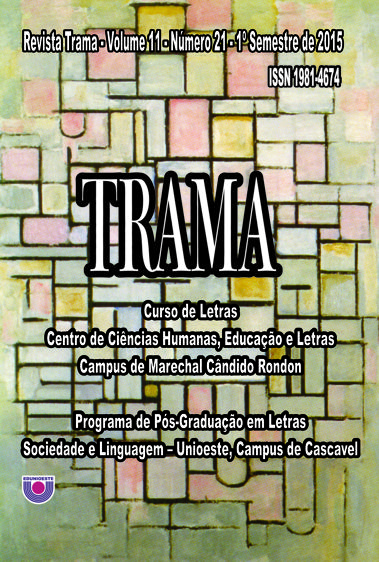A CONFIGURAÇÃO DO NARRADOR E O PAPEL DO LEITOR NA LITERATURA JUVENIL
DOI:
https://doi.org/10.48075/rt.v11i21.11155Keywords:
literatura juvenil, narrador, leitorAbstract
The purpose of this article is to analyze how the narrator of the narratives "O escaravelho do diabo" (1974), by Lucia Machado de Almeida, "Cidade dos deitados" (2008), by Heloisa Prieto, and "Meu pai não mora mais aqui" (2008), by Caio Riter, is constructed so as to perceive how the reader can be approached to or distanced from the text. A careful reading shows that Almeida's book has a more manipulative narrator because he makes summaries and comments, leaving little room for the creative participation of the reader; on the other hand, the narrator which is present in Prieto and Riter grants autonomy in reading and seeks for a reader who fills gaps through resources such as the young character's point of view and the expression of his subjectivity.
Downloads
Published
How to Cite
Issue
Section
License
Aviso de Direito Autoral Creative Commons
Política para Periódicos de Acesso Livre
Autores que publicam nesta revista concordam com os seguintes termos:
1. Autores mantém os direitos autorais e concedem à revista o direito de primeira publicação, com o trabalho simultaneamente licenciado sob a Licença Creative Commons Attribution que permite o compartilhamento do trabalho com reconhecimento da autoria e publicação inicial nesta revista.2. Autores têm autorização para assumir contratos adicionais separadamente, para distribuição não-exclusiva da versão do trabalho publicada nesta revista (ex.: publicar em repositório institucional ou como capítulo de livro), com reconhecimento de autoria e publicação inicial nesta revista.
3. Autores têm permissão e são estimulados a publicar e distribuir seu trabalho online (ex.: em repositórios institucionais ou na sua página pessoal) a qualquer ponto antes ou durante o processo editorial, já que isso pode gerar alterações produtivas, bem como aumentar o impacto e a citação do trabalho publicado (Veja O Efeito do Acesso Livre).
Licença Creative Commons
Esta obra está licenciada com uma Licença Creative Commons Atribuição-NãoComercial-CompartilhaIgual 4.0 Internacional, o que permite compartilhar, copiar, distribuir, exibir, reproduzir, a totalidade ou partes desde que não tenha objetivo comercial e sejam citados os autores e a fonte.


